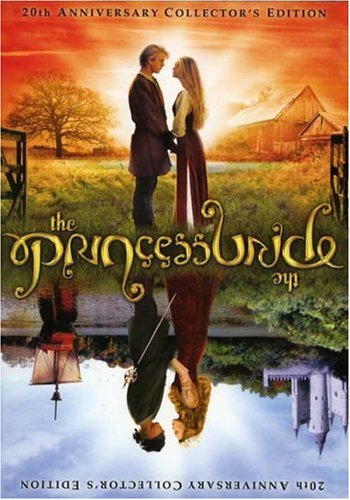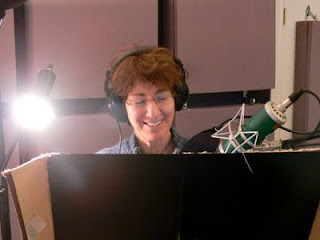Before the Many Worlds theory, the separation of fantasy and science fiction was clear. If a story was based on science and scientifically plausible yet not currently possible, it was science fiction. If a story had elements that weren’t based on science and that were not scientifically plausible—like magic, dragons, vampires or ghosts—it was fantasy. The division was clear, and which shelf every book belonged on was simple.
Then along came science fiction writers who used some of the elements of science fiction but sometimes fudged the facts or went beyond what was scientifically possible. So science fiction was divided into hard and soft science fiction. Hard science fiction stuck with what was scientifically possible, and soft science fiction went into the realm of the scientifically impossible. Both were still based on science, but where they went from there on was different.
 As time went by, the science in some science fiction became softer and softer, to the point where it was given different labels, like space opera, sci-fi, speculative fiction (or spec-fic or simply SF), or science fantasy. Star Trek, at least after the original TV series, is science fiction. Star Wars, though, is a space opera. Science fiction movies and TV shows that are very weak on their science are generally considered sci-fi. Speculative Fiction tends to be more literary and deal more, as the name implies, with “What if?” rather than what could be. And science fantasy is fantasy with science fiction elements, like Doctor Who. Doctor Who has had episodes with ghosts, vampires, werewolves and so on, usually giving pseudo-scientific explanations for them. You can’t argue that things in Doctor Who are scientifically impossible, because it’s not meant to be science fiction. Stick a bunch of planets in the Earth’s sky without gravity on Earth going haywire, and that’s fine. It’s science FANTASY, so it doesn’t have to follow the laws of science.
As time went by, the science in some science fiction became softer and softer, to the point where it was given different labels, like space opera, sci-fi, speculative fiction (or spec-fic or simply SF), or science fantasy. Star Trek, at least after the original TV series, is science fiction. Star Wars, though, is a space opera. Science fiction movies and TV shows that are very weak on their science are generally considered sci-fi. Speculative Fiction tends to be more literary and deal more, as the name implies, with “What if?” rather than what could be. And science fantasy is fantasy with science fiction elements, like Doctor Who. Doctor Who has had episodes with ghosts, vampires, werewolves and so on, usually giving pseudo-scientific explanations for them. You can’t argue that things in Doctor Who are scientifically impossible, because it’s not meant to be science fiction. Stick a bunch of planets in the Earth’s sky without gravity on Earth going haywire, and that’s fine. It’s science FANTASY, so it doesn’t have to follow the laws of science. But let’s step back in time a little before all this was going on. In 1957, Hugh Everett formulated a theory that reconciled the indeterministic behavior of subatomic particles with the laws of physics. This theory, which he called the theory of Universal Wavefunction, was later renamed by Bryce Seligman DeWitt and popularized as the Many Worlds theory. According to the Many Worlds theory, our world is one of many—perhaps even an infinite number of worlds—that are like our world but different in ways both big and small. Expansions of the Many Worlds theory have taken this even further by saying that many of these worlds might not even follow our laws of physics.
I repeat: according to expansions of the Many Worlds theory of physics, there are many--perhaps even an infinite number of--worlds out there that don’t follow our laws of physics.
 The Many Worlds theory was both troubling and exciting for the science fiction community. It was exciting because it opened up so many new possibilities. There could be alternate histories, like 19th century worlds with 21st century technology, or to put it another way, there could be steampunk. Time-travel paradoxes no longer existed, because instead of traveling back in time to a world where you weren’t meant to exist yet, you would travel sideways in time to an alternate world to which you were always meant to have time traveled. In a scene near the end of the most recent Star Trek movie, the two Spocks are having a laugh at Kirk because the older Spock managed to convince Kirk that his meeting with the younger Spock would cause a time-space paradox, which according to the Many Words theory couldn’t happen. But the meeting of the Many Worlds theory and science fiction was also troubling, because how do you define hard science fiction as being different from soft science fiction, science fantasy, and even fantasy if EVERYTHING (except for paradoxes) is scientifically possible?
The Many Worlds theory was both troubling and exciting for the science fiction community. It was exciting because it opened up so many new possibilities. There could be alternate histories, like 19th century worlds with 21st century technology, or to put it another way, there could be steampunk. Time-travel paradoxes no longer existed, because instead of traveling back in time to a world where you weren’t meant to exist yet, you would travel sideways in time to an alternate world to which you were always meant to have time traveled. In a scene near the end of the most recent Star Trek movie, the two Spocks are having a laugh at Kirk because the older Spock managed to convince Kirk that his meeting with the younger Spock would cause a time-space paradox, which according to the Many Words theory couldn’t happen. But the meeting of the Many Worlds theory and science fiction was also troubling, because how do you define hard science fiction as being different from soft science fiction, science fantasy, and even fantasy if EVERYTHING (except for paradoxes) is scientifically possible? I think the distinctions between fantasy, science fiction and science fantasy remain the same, but with one exception: fantasy that uses science to explain the fantasy in it can be science fantasy or even science fiction.
Back when I was in college, I fell in love with a science fantasy series by Gene Wolfe: The Book of the New Sun (Shadow & Claw: The First Half of 'The Book of the New Sun'













